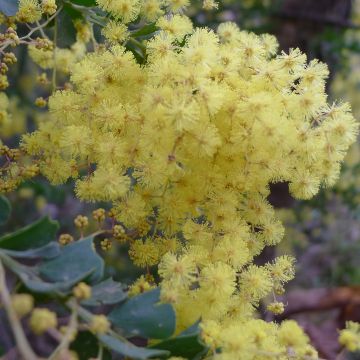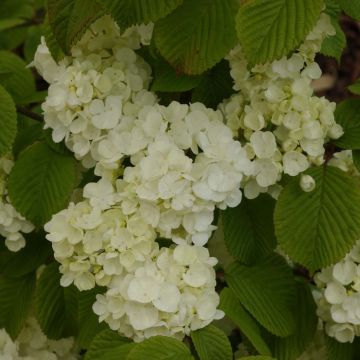

Acacia melanoxylon


Acacia melanoxylon


Acacia melanoxylon
Acacia melanoxylon
Acacia melanoxylon
Blackwood Acacia, Australian Blackwood
I've had it for 3 years and it doesn't flower.
MONIQUE, 27/04/2022
Special offer!
Receive a €20 voucher for any order over €90 (excluding delivery costs, credit notes, and plastic-free options)!
1- Add your favorite plants to your cart.
2- Once you have reached €90, confirm your order (you can even choose the delivery date!).
3- As soon as your order is shipped, you will receive an email containing your voucher code, valid for 3 months (90 days).
Your voucher is unique and can only be used once, for any order with a minimum value of €20, excluding delivery costs.
Can be combined with other current offers, non-divisible and non-refundable.
Why not try an alternative variety in stock?
View all →This plant carries a 24 months recovery warranty
More information
We guarantee the quality of our plants for a full growing cycle, and will replace at our expense any plant that fails to recover under normal climatic and planting conditions.
Would this plant suit my garden?
Set up your Plantfit profile →
Description
The Acacia melanoxylon, or blackwood, is an Australian tree with dark green-blue, evergreen leaves. In spring, it produces numerous sulphur-yellow flowers in "balls", which stand out well against the foliage. It will bring an exotic touch to your flower beds, provided you live in a region with a mild climate, as its hardiness will not exceed -6°C (21.2 °F) even once established. This tree appreciates moist soils, even slightly chalky but light and well-draining.
The blackwood is a tall tree that can be found in the coastal forests of Eastern Australia and the high-altitude forests of Tasmania. It belongs to the Fabaceae family (like beans, wisteria...), and is a close relative of the famous florist's mimosa (Acacia dealbata), which is highly appreciated for its fragrance and extensively planted in mild regions. It was introduced to Great Britain in 1808, and then to France around 1835. When juvenile, the blackwood acacia has very fine and divided leaves, with very small, persistent, delicate green-blue leaflets. The mature branches produce different leaves, entire and slightly darker green. These mature leaves are actually phyllodes, meaning flattened petioles without a lamina, which perform the chlorophyll function of the plant. The two types of leaves often coexist on growing specimens. Between March and June, depending on the region, this tree produces numerous flowers grouped in small "balls" (glomerules), slightly fragrant, with a beautiful sulphur-yellow colour that contrasts with the dark green foliage. They are followed by decorative brownish-yellow pods containing small black seeds (inedible for humans). While it can reach 30m (98ft) in its natural habitat, it will not exceed 15m (49ft) in our latitudes, with a spread of 5 to 7m (16 to 23ft). As its other name "hardwood acacia" suggests, this species produces dense and dark wood of very good quality, which is highly valued in cabinetmaking and carpentry. The trunk is dark beige when young, then darkens and becomes scaly over time.
Cultivating Acacia melanoxylon is not very difficult: it enjoys sunlight and will thrive in any light, moist, well-draining neutral soil that does not dry out in summer. Its tolerance to limestone makes it an appreciated grafting stock for lime-hating species. However, like all mimosa trees, it is quite sensitive to cold. This species remains one of the most resistant, as it can tolerate -5°C (23°F) while young, and then -10°C (14°F) once well established, possibly more in very good conditions. Be aware that young branches and leaves are susceptible to late frosts, and it is imperative to plant the tree in a location sheltered from cold winds. It produces weak suckers, less than its cousin Acacia dealbata which allows for propagation of the plant.
The blackwood mimosa brings a pronounced exotic touch and, in mild climates, it will make a sensation alongside other plants from the oceanic regions such as Grevillea, Callistemon, or the superb Tristaniopsis laurina.
Report an error about the product description
Acacia melanoxylon in pictures




Plant habit
Flowering
Foliage
Botanical data
Acacia
melanoxylon
Fabaceae
Blackwood Acacia, Australian Blackwood
Australia
Other Acacia - Wattle
View all →Planting and care
Cultivating Acacia melanoxylon is not very difficult: it enjoys the sun and will thrive in any light, moist but well-drained soil, which does not dry out in summer, weakly acidic to weakly alkaline. Its tolerance to alkaline soil makes it a preferred rootstock for lime-hating species. Like all mimosas, it is quite frost-sensitive. However, this species remains one of the most resistant, as it can withstand -5 to -7°C (23 - 19.4°F) in its youth, and then -10°C (14°F) once well-established, perhaps even more in very good conditions. Be aware that young branches and leaves remain sensitive to late frosts, and the tree must be planted in a sheltered location away from cold winds. The plant produces some suckers, less than its cousin Acacia dealbata, which allows for the propogation of the plant.
Planting period
Intended location
Care
-
, onOrder confirmed
Reply from on Promesse de fleurs
Similar products
Haven't found what you were looking for?
Hardiness is the lowest winter temperature a plant can endure without suffering serious damage or even dying. However, hardiness is affected by location (a sheltered area, such as a patio), protection (winter cover) and soil type (hardiness is improved by well-drained soil).

Photo Sharing Terms & Conditions
In order to encourage gardeners to interact and share their experiences, Promesse de fleurs offers various media enabling content to be uploaded onto its Site - in particular via the ‘Photo sharing’ module.
The User agrees to refrain from:
- Posting any content that is illegal, prejudicial, insulting, racist, inciteful to hatred, revisionist, contrary to public decency, that infringes on privacy or on the privacy rights of third parties, in particular the publicity rights of persons and goods, intellectual property rights, or the right to privacy.
- Submitting content on behalf of a third party;
- Impersonate the identity of a third party and/or publish any personal information about a third party;
In general, the User undertakes to refrain from any unethical behaviour.
All Content (in particular text, comments, files, images, photos, videos, creative works, etc.), which may be subject to property or intellectual property rights, image or other private rights, shall remain the property of the User, subject to the limited rights granted by the terms of the licence granted by Promesse de fleurs as stated below. Users are at liberty to publish or not to publish such Content on the Site, notably via the ‘Photo Sharing’ facility, and accept that this Content shall be made public and freely accessible, notably on the Internet.
Users further acknowledge, undertake to have ,and guarantee that they hold all necessary rights and permissions to publish such material on the Site, in particular with regard to the legislation in force pertaining to any privacy, property, intellectual property, image, or contractual rights, or rights of any other nature. By publishing such Content on the Site, Users acknowledge accepting full liability as publishers of the Content within the meaning of the law, and grant Promesse de fleurs, free of charge, an inclusive, worldwide licence for the said Content for the entire duration of its publication, including all reproduction, representation, up/downloading, displaying, performing, transmission, and storage rights.
Users also grant permission for their name to be linked to the Content and accept that this link may not always be made available.
By engaging in posting material, Users consent to their Content becoming automatically accessible on the Internet, in particular on other sites and/or blogs and/or web pages of the Promesse de fleurs site, including in particular social pages and the Promesse de fleurs catalogue.
Users may secure the removal of entrusted content free of charge by issuing a simple request via our contact form.
The flowering period indicated on our website applies to countries and regions located in USDA zone 8 (France, the United Kingdom, Ireland, the Netherlands, etc.)
It will vary according to where you live:
- In zones 9 to 10 (Italy, Spain, Greece, etc.), flowering will occur about 2 to 4 weeks earlier.
- In zones 6 to 7 (Germany, Poland, Slovenia, and lower mountainous regions), flowering will be delayed by 2 to 3 weeks.
- In zone 5 (Central Europe, Scandinavia), blooming will be delayed by 3 to 5 weeks.
In temperate climates, pruning of spring-flowering shrubs (forsythia, spireas, etc.) should be done just after flowering.
Pruning of summer-flowering shrubs (Indian Lilac, Perovskia, etc.) can be done in winter or spring.
In cold regions as well as with frost-sensitive plants, avoid pruning too early when severe frosts may still occur.
The planting period indicated on our website applies to countries and regions located in USDA zone 8 (France, United Kingdom, Ireland, Netherlands).
It will vary according to where you live:
- In Mediterranean zones (Marseille, Madrid, Milan, etc.), autumn and winter are the best planting periods.
- In continental zones (Strasbourg, Munich, Vienna, etc.), delay planting by 2 to 3 weeks in spring and bring it forward by 2 to 4 weeks in autumn.
- In mountainous regions (the Alps, Pyrenees, Carpathians, etc.), it is best to plant in late spring (May-June) or late summer (August-September).
The harvesting period indicated on our website applies to countries and regions in USDA zone 8 (France, England, Ireland, the Netherlands).
In colder areas (Scandinavia, Poland, Austria...) fruit and vegetable harvests are likely to be delayed by 3-4 weeks.
In warmer areas (Italy, Spain, Greece, etc.), harvesting will probably take place earlier, depending on weather conditions.
The sowing periods indicated on our website apply to countries and regions within USDA Zone 8 (France, UK, Ireland, Netherlands).
In colder areas (Scandinavia, Poland, Austria...), delay any outdoor sowing by 3-4 weeks, or sow under glass.
In warmer climes (Italy, Spain, Greece, etc.), bring outdoor sowing forward by a few weeks.

















































